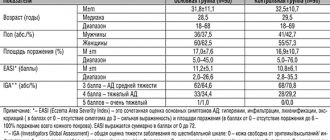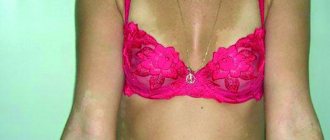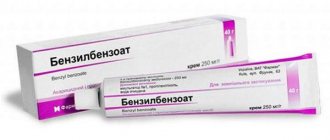Varicose veins are not a hindrance to beauty
There is no need to abandon the cosmetic procedure: many modern techniques for removing unwanted hair on the legs are not contraindicated for varicose veins in the initial stage. However, it is important to choose the right technique that will not harm your health if the first signs of the disease have already made themselves felt. The best way to protect yourself is to first consult with a phlebologist, who will determine the presence and stage of development of varicose veins and give professional recommendations.
How can you remove hair on legs with varicose veins?
- Shaving with a machine, or depilation “the old fashioned way”, when the top part of the hair is cut off, without affecting the hair follicles. It is important to perform the procedure very carefully so as not to damage the skin.
- Chemical hair removal using depilatory cream.
- Laser hair removal for varicose veins in the early stages is also not contraindicated. Laser treatment of hair follicles gives long-term results. The laser technique uses an additional cooling system, so the skin does not overheat.
- Photoepilation is a modern non-invasive method that does not violate the integrity of the skin. The light pulse acts with high temperature on the follicle pointwise, no deeper than the dermal layer, under which the vessels are located. The initial and first stages of varicose veins are not a contraindication for the photoepilation procedure.
- Electrolysis can be done at the initial and first stages of varicose veins. The technology involves inserting a special needle into the root of each hair and applying an electric current.
Is it possible to do ELOS hair removal for varicose veins? Here the opinions of experts differ, so a preliminary visit to a phlebologist will not be superfluous. The method combines 2 types of activity – light and radio frequency. Thermal effects are not selective and affect adjacent skin. And, despite the fact that there is an additional skin cooling system, the procedure itself is painful; painkillers are required. This should also be taken into account before the procedure and the cosmetologist should be warned about the presence of varicose veins.
Emla cream for local/external use 30g
Active substance
prilocaine
ATX code
N01BB20 (Combination drugs)
Release form, packaging and composition of the drug
◊ Cream for local and external use
white, uniform.
| 1 g | |
| lidocaine | 25 mg |
| prilocaine | 25 mg |
[PRING] macrogol glyceryl hydroxystearate (Arlaton 289) - 19 mg, carbomer 974P (carboxypolymethylene) - 10 mg, sodium hydroxide - 5.2 mg (to bring the pH to 8.7-9.7), purified water - up to 1 g.
5 g - aluminum tubes (5) - cardboard packs with first opening control. 30 g - aluminum tubes (1) - cardboard packs.
Clinical and pharmacological group
Local anesthetic for superficial anesthesia
Pharmacotherapeutic group
Local anesthetic
pharmachologic effect
Systemic absorption of Emla cream depends on the dose, duration of application and thickness of the skin (depending on the area of the body), as well as other skin characteristics, such as skin diseases and shaving. When applied to the ulcerative surface of the lower extremities, the absorption of the drug may be influenced by the characteristics of the ulcers, for example, the size (with an increase in the area of the ulcer, absorption increases).
Intact skin
In adults, after applying 60 g of cream to an area of 400 cm2 of intact thigh skin (1.5 g per 10 cm2) for 3 hours, systemic absorption for lidocaine was approximately 3% and for prilocaine 5%. Absorption is slow. Cmax of lidocaine (average value 0.12 μg/ml) and prilocaine (average value 0.07 μg/ml) in blood plasma was achieved approximately 4 hours after application of the cream. The risk of toxic symptoms exists only when the concentration of active substances in the blood plasma is 5-10 mcg/ml. When Emla cream is applied to intact skin 8-12 hours after shaving, the plasma Cmax of lidocaine and prilocaine in both young and elderly patients is very low and well below possible toxic levels.
Trophic ulcers of the lower extremities
The time to reach Cmax of lidocaine (0.05-0.84 mcg/ml) and prilocaine (0.02-0.08 mcg/ml) in blood plasma is 1-2.5 hours from the moment the drug is applied to the ulcer surface (5-10 g of cream for 30 minutes).
With repeated application of the cream to the ulcerative surface, there was no accumulation of prilocaine, lidocaine or their metabolites in the blood plasma. 2-10 g of Emla cream was applied to the ulcer surface with an area of up to 62 cm2 for 30-60 minutes from 3 to 7 times a week (15 times within a month).
Mucous membrane of the genital organs
The time to reach Cmax of lidocaine and prilocaine in the blood plasma (on average 0.18 mcg/ml and 0.15 mcg/ml, respectively) is approximately 35 minutes from the moment the drug is applied to the vaginal mucosa (10 g of cream for 10 minutes).
Indications for use
In adults:
- superficial anesthesia of the skin during injections (including vaccinations), punctures and catheterization of blood vessels and superficial surgical interventions, including minor cosmetic procedures and hair removal;
- superficial anesthesia of trophic ulcers of the lower extremities during surgical treatment (mechanical cleaning), for example, to remove fibrin, pus and necrotic tissue;
- superficial anesthesia of the mucous membrane of the genital organs before painful manipulations and for pain relief before injections of local anesthetics.
In children:
- superficial anesthesia of the skin during injections (including vaccination), punctures and catheterization of blood vessels and superficial surgical interventions (including removal of molluscum contagiosum).
Dosage
Externally on the skin, locally on the mucous membrane.
Adults
Superficial anesthesia of intact skin
| Indication | Dose and method of application | Application time |
| When inserting a needle, for example when catheterizing blood vessels and taking blood samples | Apply half a 5 g tube (approximately 2 g) per 10 cm2 in a thick layer to the skin and cover with an occlusive dressing. | 1 hour, maximum 5 hours |
| For minor surgical procedures, such as curettage of molluscum contagiosum, removal of warts, minor cosmetic procedures and hair removal | Apply 1.5-2 g/10 cm2 in a thick layer to the skin and cover with an occlusive dressing | 1 hour, maximum 5 hours |
| On large areas of freshly shaved skin (on an outpatient basis), incl. before epilation | maximum recommended dose 60 g, maximum recommended application area 600 cm2; apply a thick layer to the skin and cover with an occlusive dressing | 1 hour, maximum 5 hours |
| For superficial procedures over large areas (in hospital settings), for example, skin harvesting using the split flap method | Apply 1.5-2 g/10 cm2 in a thick layer to the skin and cover with an occlusive dressing | 2 hours, maximum 5 hours |
Superficial anesthesia of trophic ulcers of the lower extremities
For surgical treatment (mechanical cleaning) of trophic ulcers of the lower extremities: a single dose of about 1-2 g/10 cm2; Apply the cream in a thick layer to the ulcer surface, no more than 10 g of cream per procedure. Apply an occlusive dressing. Application time: minimum 30 min.
An opened tube of cream is intended for single use; the tube with any remaining cream should be discarded after use on one patient.
In the case of treating ulcers, into the tissues of which penetration of the drug is difficult, the duration of application can be increased to 60 minutes. Mechanical cleaning must begin no later than 10 minutes after removing the cream.
When manipulating ulcers of the lower extremities, Emla cream was used up to 15 times over 1-2 months without reducing effectiveness and increasing the incidence of local reactions.
Superficial anesthesia of the genital organs
Genital skin
Anesthesia before injections of local anesthetics.
Men -
1 g/10 cm2;
apply the cream in a thick layer to the skin; application time - 15 minutes. Women
- 1-2 g/10 cm2; apply the cream in a thick layer to the skin; application time - 60 min.
Superficial anesthesia of the genital mucosa
When removing condylomas and for pain relief before injections of local anesthetics.
Approximately 5-10 g of cream, depending on the area of the treated surface. The cream should be applied to the entire surface of the mucous membrane, including the folds of the mucous membrane. No occlusive dressing is required. Application time: 5-10 min. Carry out the procedure immediately after removing the cream.
Children
Anesthesia during needle insertion (including vaccination), curettage of molluscum contagiosum and other minor superficial surgical procedures.
Apply the cream in a thick layer to the skin and cover with an occlusive dressing. The dose should correspond to the surface being treated and should not exceed 1 g of cream per 10 cm2
| Age | Application area | Duration of application |
| 0-3 months | maximum 10 cm2 (total 1 g of cream) (maximum daily dose) | 1 hour (important: no more than 1 hour) |
| 3-12 months | maximum 20 cm2 (total 2 g cream) | 1 hour |
| 1-6 years | maximum 100 cm2 (total 10 g of cream) | 1 hour (maximum 4 hours) |
| 6-12 years | maximum 200 cm2 (total 20 g of cream) | 1 hour (maximum 4 hours) |
A strip of Emla cream 3.5 cm long approximately corresponds to a dose of 1 g.
Increasing the application time reduces anesthesia. In children with atopic dermatitis
Application time should be reduced to 30 minutes.
Apply the cream in a thick layer to the skin and cover with an occlusive dressing.
Recommendations for applying the drug
1. Pierce the protective membrane of the aluminum tube using the screw cap, squeeze out a sufficient amount of cream from the tube and apply to the site of the intended procedure. When anesthetizing the skin, it is possible to use occlusive stickers (attached to the 5x5 g package).
2. a. Take one of the occlusion stickers and remove the center portion.
b. Separate the paper lining from the paper edging on the back of the headband
When anesthetizing trophic ulcers of the lower extremities, use an occlusive PVC dressing.
3. Cover the applied cream with a bandage so that the layer of cream underneath is thick and does not squeeze out from under the bandage. Gently smooth the edges of the bandage to avoid cream leakage.
4. If using the occlusion sticker included in the package, remove the paper frame. The time of application of the drug can be recorded directly on the bandage.
5. After the recommended time has passed, remove the bandage and any remaining cream from the surface.
Contraindications
- hypersensitivity to amide-type local anesthetics or any other component of the drug;
- premature newborns born at less than 37 weeks of gestation;
- newborns weighing less than 3 kg.
Carefully:
glucose-6-phosphate dehydrogenase deficiency, hereditary or idiopathic methemoglobinemia, common neurodermatitis (atopic dermatitis), patients taking class III antiarrhythmic drugs (eg, amiodarone).
Overdose
If the recommended dosage regimen is followed, the development of signs of systemic toxicity is unlikely.
Symptoms
intoxications are probably the same as with the use of other local anesthetics, for example, stimulation of the central nervous system, and in severe cases, depression of the central nervous system and cardiac activity.
In rare cases, the development of clinically significant methemoglobinemia has been observed. Prilocaine in high doses can cause an increase in methemoglobin levels.
Superficial application of 125 mg of prilocaine for 5 hours caused the development of moderate methemoglobinemia in a child aged 3 months. Superficial application of lidocaine at a dose of 8.6-17.2 mg/kg caused serious intoxication in newborns.
Treatment:
severe neurological symptoms (convulsions, central nervous system depression) require symptomatic treatment, incl. prescribing anticonvulsants and, if necessary, mechanical ventilation. In case of development of methemoglobinemia, the antidote is methylthioninium chloride (methylene blue).
Due to the slow systemic absorption of the drug, patients should be monitored for several hours after starting treatment for intoxication.
Side effects
When applied to intact skin
| Common (≥1%, 10%) | Skin: transient local reactions in the area where the drug is applied, such as pallor, redness and swelling. |
| Uncommon (≥0.1%, 1%) | Skin: at the first moment after application there is a slight burning sensation, itching and a feeling of warmth (in the area where the drug is applied). |
| Rare (<0.1%) | General: allergic reactions, in the most severe cases – anaphylactic shock. Methemoglobinemia and/or cyanosis. Reactions in the area of application of the drug, such as hemorrhagic rash or pinpoint hemorrhages, especially after prolonged application in children with atopic dermatitis or molluscum contagiosum. Irritation of the cornea due to accidental contact of the cream with the eyes. |
When applied to trophic ulcers of the lower extremities
| Common (≥1%, <10%) | Skin: transient local reactions in the area of application of the drug, such as pallor, redness and swelling; at the first moment after application there is a slight burning sensation, itching and a feeling of warmth (in the area where the drug is applied). |
| Uncommon(≥0.1%, 1%) | Skin: skin irritation (in the area where the drug is applied). |
| Rare(<0.1%) | General: allergic reactions, in the most severe cases – anaphylactic shock. |
Overdose
In patients receiving drugs that induce the development of methemoglobinemia (for example, drugs containing a sulfo group), Emla cream may help increase the concentration of methemoglobin in the blood.
When treating with other local anesthetics and drugs structurally similar to them (including tocainide), the risk of increased systemic effects when using high doses of Emla cream should be taken into account.
No specific studies have been conducted to evaluate the interaction of lidocaine/prilocaine with class III antiarrhythmic drugs; caution should be exercised when using drugs together.
Drugs that reduce the clearance of lidocaine (eg, cimetidine or beta-blockers) may cause potentially toxic plasma concentrations when repeated high doses of lidocaine are administered over an extended period of time. This interaction is not clinically significant during short-term therapy with lidocaine (eg, Emla cream) at recommended doses.
Pharmaceutical interactions
not detected.
Storage conditions
The drug should be stored out of the reach of children at a temperature below 30°C. Do not freeze. Shelf life: 3 years. Do not use after the expiration date stated on the package.
Conditions for dispensing from pharmacies
The drug is available without a prescription.
Special Instructions
Patients with glucose-6-phosphate dehydrogenase deficiency or hereditary or idiopathic methemoglobinemia are more susceptible to drug-dependent methemoglobinemia.
The effectiveness of using the cream in newborns during the procedure of taking blood samples from the heel has not been established.
Care should be taken when applying Emla cream to the skin around the eyes, as the drug causes eye irritation. Elimination of protective reflexes can cause irritation or damage to the cornea. If the cream gets into your eyes, immediately rinse your eyes with water or 0.9% sodium chloride solution and protect your eyes until protective reflexes are restored.
Caution must be exercised when applying the drug to the skin with atopic dermatitis; Application time should be reduced (15-30 min).
Patients taking class III antiarrhythmic drugs (for example, amiodarone) should be under constant monitoring and ECG control, because Possible effect on cardiac activity.
Emla cream should not be applied to a damaged eardrum or in other cases of possible penetration of the cream into the middle ear.
The cream should not be applied to open wounds.
Lidocaine and prilocaine in concentrations above 0.5-2% have bactericidal and antiviral properties. In this regard, it is recommended to take special care when applying the cream before subcutaneous administration of a live vaccine (for example, BCG).
Use in pediatrics
Due to the lack of data on the absorption of the drug, it is not recommended to apply the cream to the genital mucosa in children.
In children under 3 months of age
The safety and effectiveness of Emla cream was determined after applying a single dose. In such children, after applying the cream, a temporary increase in the level of methemoglobin in the blood was often observed, lasting up to 13 hours. However, the observed increase in the level of methemoglobin in the blood is probably not clinically significant.
Due to the lack of data, the combined use of Emla cream and drugs that cause methemoglobinemia is not recommended in children aged 0 to 12 months.
.
Impact on the ability to drive vehicles and machinery
Does not affect the ability to drive vehicles or operate equipment.
What hair removal methods are not suitable for varicose veins?
- Enzyme hair removal is hair removal using special formulations containing enzymes. During hair removal, a special thermal bandage is used, which is strictly contraindicated in case of problems with veins.
- Quantum hair removal is a thermal method of removing unwanted hair using selective photothermolysis. Hair follicles are destroyed when exposed to temperatures within 70°C. Quantum hair removal devices do not have a skin cooling system, which means this procedure is not suitable for those who have problems with the blood vessels of the legs.
- Is it possible to use an electric epilator for varicose veins? Most experts answer negatively. The fact is that using tweezers injures the skin, which can provoke the development of varicose veins.
- Sugaring and waxing, or removal of unwanted hair using warm masses - sugar paste, wax. Exposure to heat in combination with sudden movements for subsequent removal is extremely harmful to weakened blood vessels. Such mechanical surface methods stretch the skin and damage capillaries, and are therefore not recommended for varicose veins of the legs.
emla for deep bikini hair removal
I would like to note right away that I am against medicinal local anesthesia without first consulting a doctor, because even light local anesthesia itself can cause dangerous consequences if you experience unexpected allergic reactions. 1) Cream “Emla”, 5%. (composition: lidocaine, prilocaine). Anesthesia during hair removal with Emla cream 5% gives a good effect if the product is applied in a thin layer and cling film is placed on top for about an hour. There is no need to rub Emla cream in additionally. The pain will be much less acute. Its only contraindications are individual intolerance and methemoglobinemia. During pregnancy, the use of such a drug is possible only after consultation with a doctor. 2) 10% spraylidocaine (acts only on the mucous membrane). In cases where not deep anesthesia is required, lidocaine spray 10% can be used as local anesthesia. To do this, 3-3.5 hours before hair removal, the skin must be treated with the product and wrapped with cling film. Lidocaine spray is less suitable than other products for bikini hair removal, since it is initially intended only for anesthesia of the mucous membranes. Lidocaine and Emla should be used if there is no allergy (a test was carried out). According to reviews, it does not work for everyone. 3) Take a painkiller tablet, such as Tempalgin, Nice, Nurofen, etc. 4) Before epilation, wash and steam your body well, this will make the procedure more comfortable and almost painless. 5) Do not use ice to cool or numb the skin. One of the most common misconceptions is freezing the skin for pain relief. But the cold will also help shrink pores. But using cooling after the procedure is very good. This will help reduce subjective sensations and reduce irritation. 6) Do not drink coffee or alcohol before the procedure. Some people believe that a glass of wine or beer before the procedure or a cup of coffee will help them relax. This means the procedure will be painless. It's a delusion. The general stimulation of the body as a result of such “doping” leads to increased skin sensitivity. Therefore, it is better to wait a couple of hours after taking these drinks. It's better to drink plain water. 7) Endure the pain. Some more small additions for those who live according to biorhythms. It turns out that pain sensitivity behaves differently throughout the day. There are two periods of time in the day when the feeling of pain dulls: 1. in the morning (from 10 to 11 o’clock) the pain threshold increases, so we can remove hair, go to the dentist or cosmetologist for facial cleansing or beauty injections; 2. in the evening (from 19 to 21 hours) it’s “beauty time” and any cosmetic procedures give a more pronounced effect, including depilation, as well as various wraps, masks, massages, etc. For owls you need to add 1-2 hours. According to some reports, the period from 14:30 to 15:30 is also considered favorable for painful procedures!
When do you need a consultation with a phlebologist?
If you know that you have problems with blood vessels or have doubts when planning hair removal, first visit a phlebologist. After all, in order to choose an effective and safe hair removal technique, you need to know the stage of varicose veins and understand where the affected areas are located.
A phlebologist only needs one hour to diagnose and accurately determine the stage of the disease and give recommendations. We invite you to the First Phlebological Center to undergo a detailed examination of the leg veins and receive informative advice from an experienced specialist.






